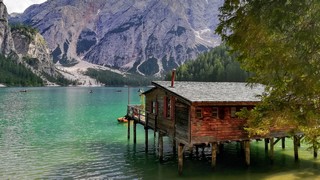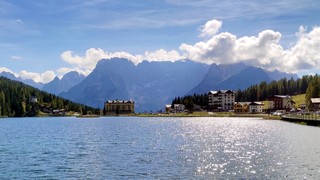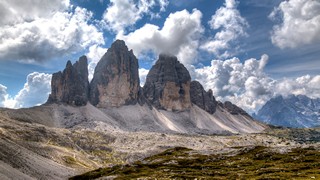Introduction
"Cibiana di Cadore" is considered one of the most beautiful and suggestive villages in the province of "Belluno," famous both for the murals painted on the facades of its houses and for the Museum in the Clouds. Cibiana is a very characteristic historic village, which maintains the charm of the past. If you want to discover its history, its culture and its beauty, continue reading.
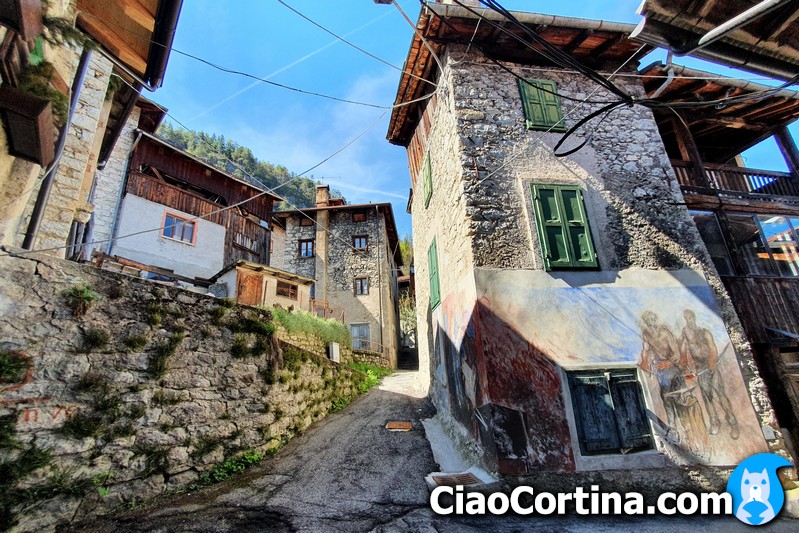
The Murals
Both local and international artists have contributed to make "Cibiana di Cadore" a true open-air museum. In every glimpse of the village you can breathe history and tradition, so it's a perfect place for a day immersed in culture and art.
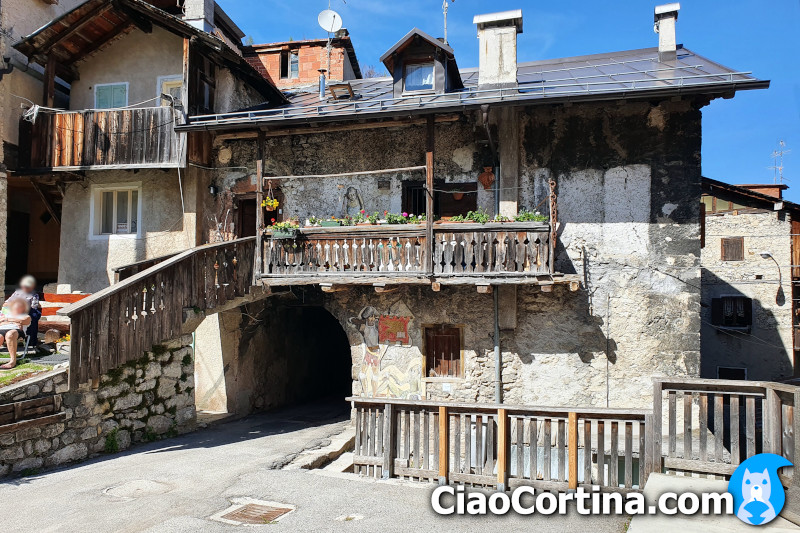
The idea of the murals was born in 1980 thanks to the intuition of Osvaldo Da Col and Ludovico Calabrò. They were looking for a way to promote the town and attract some tourists, to try to stop the loss of residents.
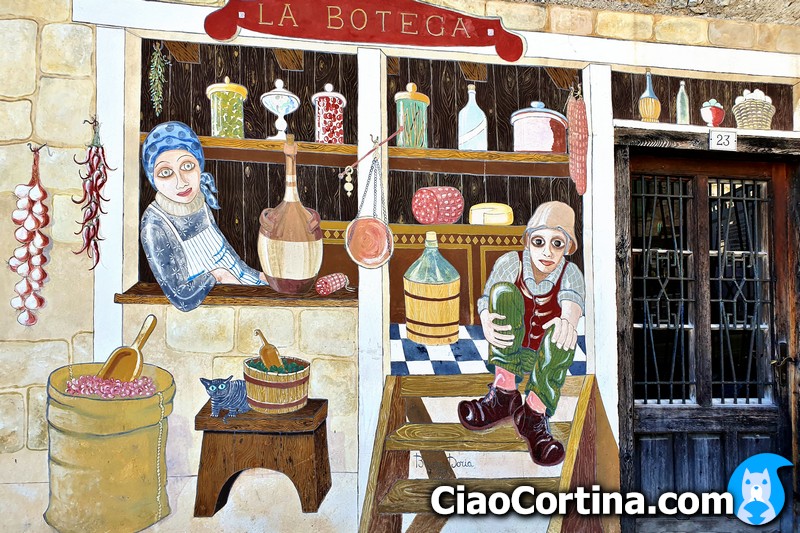
Osvaldo worked as an ice cream maker in Germany. Returning home he was fascinated by the religious themed frescoes that decorated the houses along the road between Austria and Bavaria. After discussing this topic with his close friend "Vico," an internationally known artist, they had the idea of painting similar frescoes in "Cibiana" as well.
... he was fascinated by the religious themed frescoes...
They had a genius idea: instead of making a few murals and then stopping, they decided to make two or three murals each year, to keep attention on the project with the passing of time.
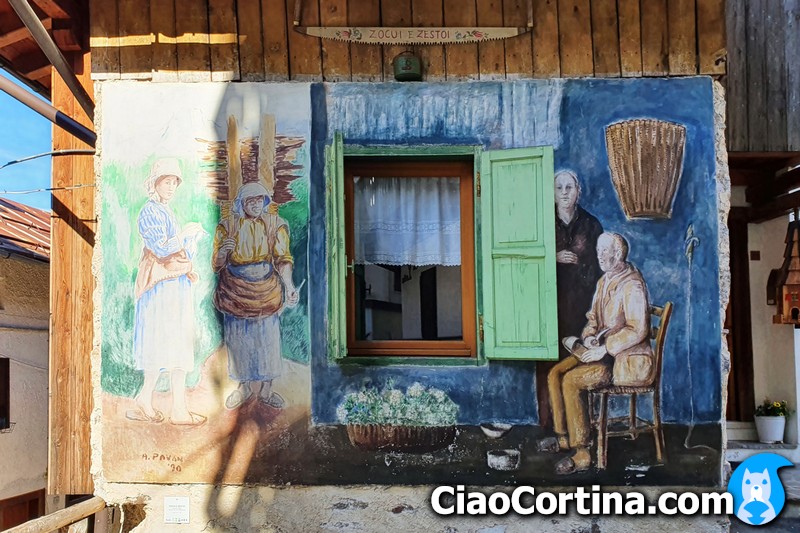
Another great intuition was to paint the murals only on the oldest houses of "Cibiana," representing a subject related to the history of the building. This is the idea behind frescoes like "la Botega," that means the store "i Faure," that means the blacksmiths and "al Stagnin" that is the craftsman who dealt with small repairs of the tools.
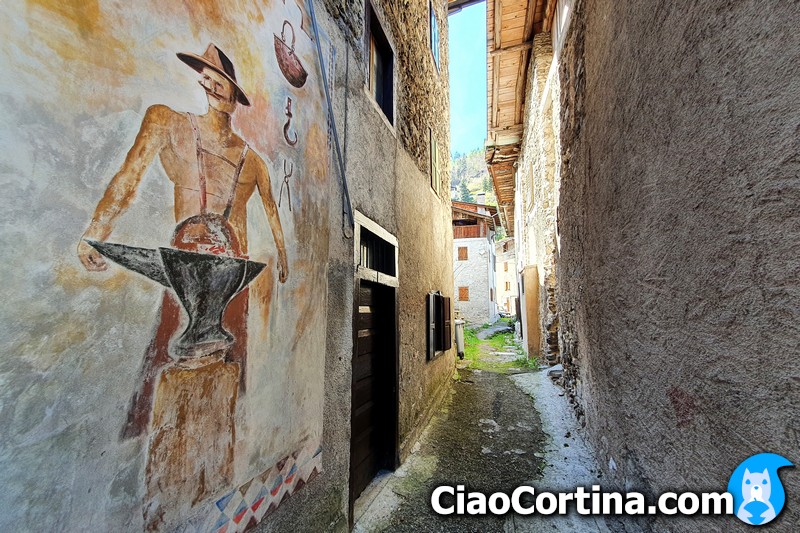
Not all the frescoes are related to the works of the past; there are also murals that portray stories and legends of the tradition of "Cibiana." One example is the fresco depicting the fire in the district of "Pianezze," which happened on 3 August, 1852, that was stopped "by divine providence." Another example is "La Visciades" by Paolo Meneghesso, which describes the activity of bird hunters with mistletoe.
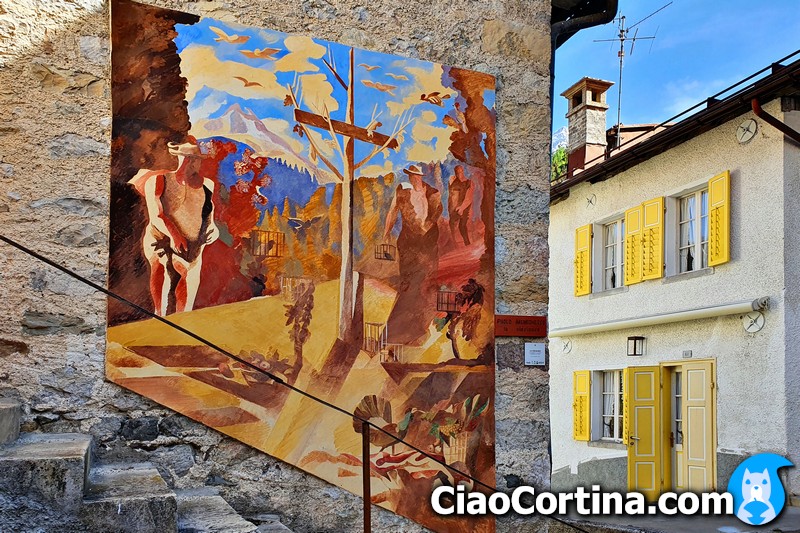
One of the latest murals created comes from Roberto Bianchi, a very talented naturalist painter and a native of "Cibiana di Cadore." His mural is inspired by his paintings; Roberto, in fact, specializes in oil representations of the fauna of the Dolomites.
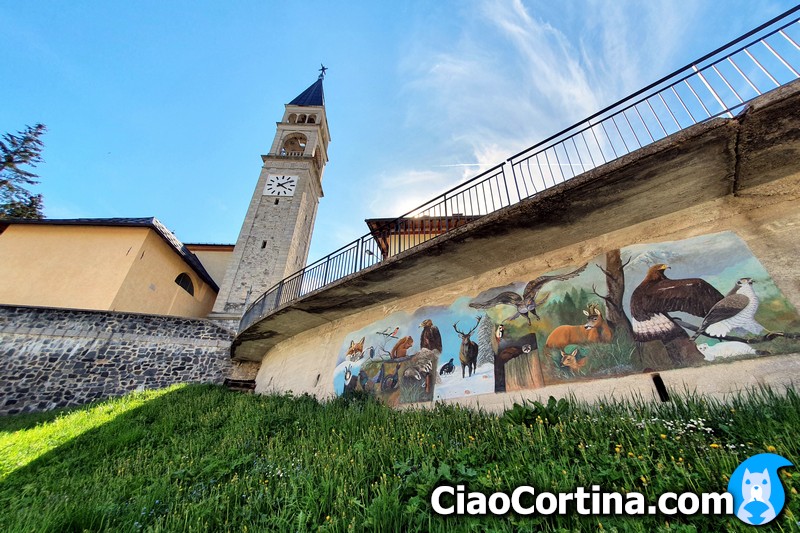
As mentioned above, murals are constantly evolving, with new paintings created each year. The painters who come here to paint follow a motto that is really touching: you come to "Cibiana" not to take glory, but to bring it.
... you come to Cibiana not to take glory, but to bring it...
The murals are more than 50 and are scattered along the three districts in which the town is divided: "Masarié," "Pianezze" and "Cibiana di Sotto." To see all the murals you need at least half a day, in which you'll have to walk for a few kilometers along the small streets that cross the town. Fortunately there are many fountains for a refreshing stop, which allow you to drink some water between one mural and another. If you want a map of the murals, you can download it directly from the official website of "Cibiana."
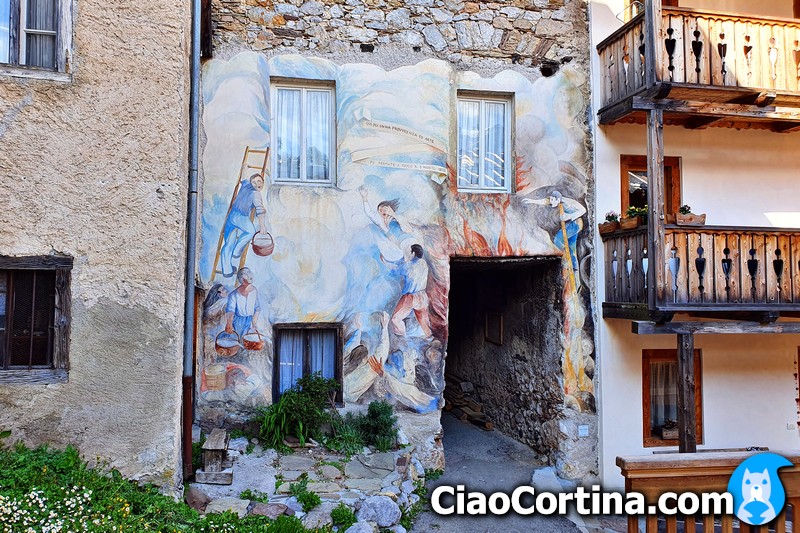
The inhabitants of the village are usually kind and used to tourists, but remember that these are people who live in "Cibiana," they are not there to entertain guests. You should always be polite, respectful and do not enter private property.
If you are hungry, you can stop to eat or drink a beer at Bikers' Bos bar, a place where you'll relive the emotions of a traditional village bar. Alternatively, you can look to the Taulà dei bos, a restaurant with a conference hall annex that has recently changed management.
 Help us stay ad-free with a small offer.Donate now!
Help us stay ad-free with a small offer.Donate now!
Mural painting
So, what is the mural painting technique that has been used to paint all the murals of "Cibiana?" It is a painting technique very similar to that of fresco: the colored pigment is applied directly to the fresh plaster. This allows the mural to become one with the wall where it is drawn. First of all, the outline of the subject is traced, then the painter moves to the large backgrounds, and, only at the end, the attention goes to the details.
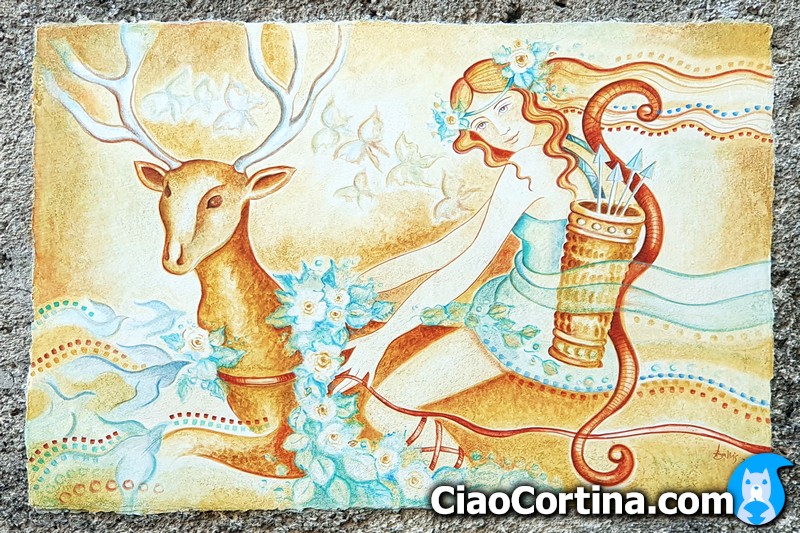
Initially, this painting technique was used for political propaganda images, but in 1900, it was rediscovered as a purely decorative technique. In Italy, in addition to "Cibiana," there are other examples of murals, such as those of "Dozza," a medieval village located in "Emilia Romagna," or "Satriano di Lucania," a town in "Basilicata," considered one of the most influential villages in this sector.
 Help us stay ad-free with a small offer.Donate now!
Help us stay ad-free with a small offer.Donate now!
Short story of Cibiana
The foundation of "Cibiana di Cadore" took place over a thousand years ago. The barbarian invasions pushed the populations that lived along the "Cadore" valley to move in order not to fall victim to pillage.
The town reached the peak of its expansion during the Venetian domination, when the iron mines of "Ciarsiè" and "Ronzei" on the right side of Mount Rite made "Cibiana" one of the largest suppliers of keys and artillery bullets of the "Serenissima," as Venice is called when referring to its ancient history.
Iron extraction continued for more than three centuries and closed definitively around 1770. You can find many testimonies of this period in the Museum of the iron and the key, in "Cibiana di Sotto."
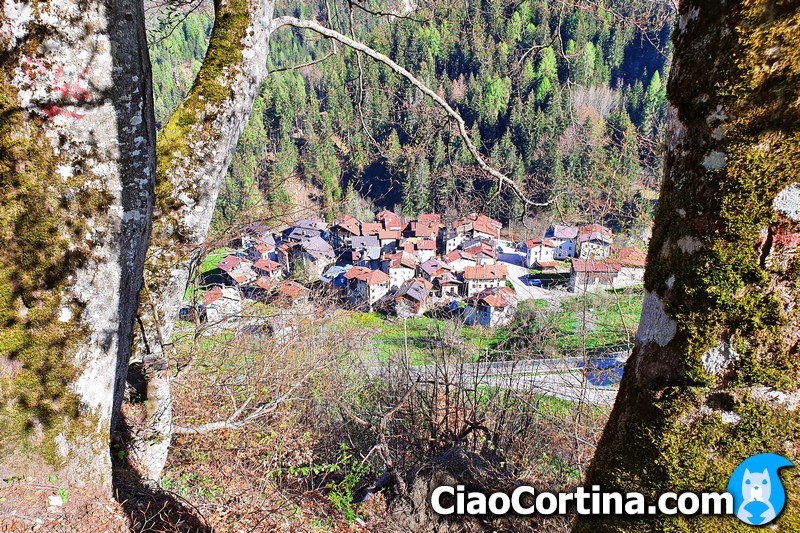
In the following centuries the village maintained itself with the trade of keys and the pastoral activities. After the crisis following the first world war many residents emigrated, mostly to work in the ice cream parlors in Germany. During his travels to return home, as already mentioned above, the current president of the Pro Loco Osvaldo Da Col had the inspiration for the creation of the murals. Nowadays the village survives thanks to tourism and to the trade of keys, an activity still central to the local economy, thanks to the company Errebi that offers work to over 60 people.
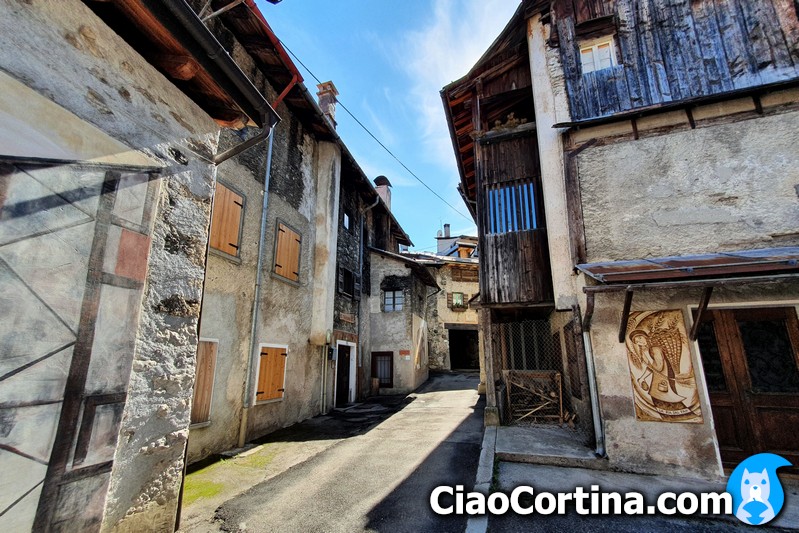
The village has gained more tourist visibility thanks to the filming of a famous Italian TV series, called "Un passo dal cielo." The major part of the eleventh episode of the sixth season has been filmed in the district of "Masarié." The series is really followed and the sixth season has been viewed, in Italy, by approximately five million people, which is almost a record for an Italian product.
 Help us stay ad-free with a small offer.Donate now!
Help us stay ad-free with a small offer.Donate now!
How to reach Cibiana
"Cibiana di Cadore" can be easily reached from State Road 51 of Alemagna. Just before reaching "Venas di Cadore" you must turn right, in the direction of "Zoldo Alto" and "Passo Cibiana." The intersection is well signposted.
... it takes about forty minutes...
The drive from Cortina d'Ampezzo takes about forty minutes, for a distance of thirty three kilometers, twenty miles and a half. Unfortunately, this is not a particularly scenic nor an interesting route. Considering it's a narrow mountain road, with sharp turns, you should drive slowly, using the navigator.
If you don't have a car, it's possible to reach "Cibiana" also by bus, but the very few lines that go there from "Cortina" could make the organization a bit complicated.
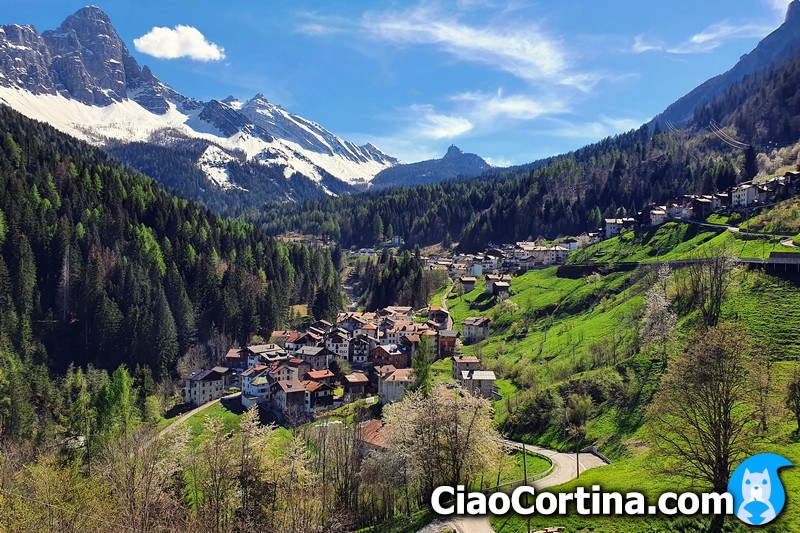
Once you reach your destination, you'll find a large parking lot on the left, just before reaching the town. During peak season you may find some traffic, so we recommend leaving early in the morning, especially in case of uncertain weather, to increase the chances of finding a car parking.
If you are interested in other things to see around Cortina d'Ampezzo, you may want to read our in-depth article. You can find it below:
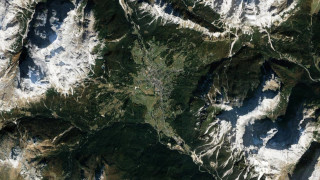
 Help us stay ad-free with a small offer.Donate now!
Help us stay ad-free with a small offer.Donate now!
The museum in the clouds
In 2002, on the summit of Mount "Rite," was inaugurated the MMM Dolomites, also known as The Museum in the Clouds. This museum is a part of the famous Messner Mountain Museum, that is the reason for the acronym MMM. It is a museum project composed of six structures located in as many locations in South Tyrol and "Belluno." The work has been realized thanks to the commitment of the well-known mountaineer Reinhold Messner to raise the awareness of mountain life and connect people with nature.
The heart of the museum circuit is located in "Firmian," inside the ancient walls of "Castel Firmiano," while the other structures have been erected in "Corones," "Juval," "Ripa," "Ortles," and, obviously, in "Cibiana." Each museum has in common the theme of life and exploration of the mountains. For more information we invite you to visit the official website of the MMM project.
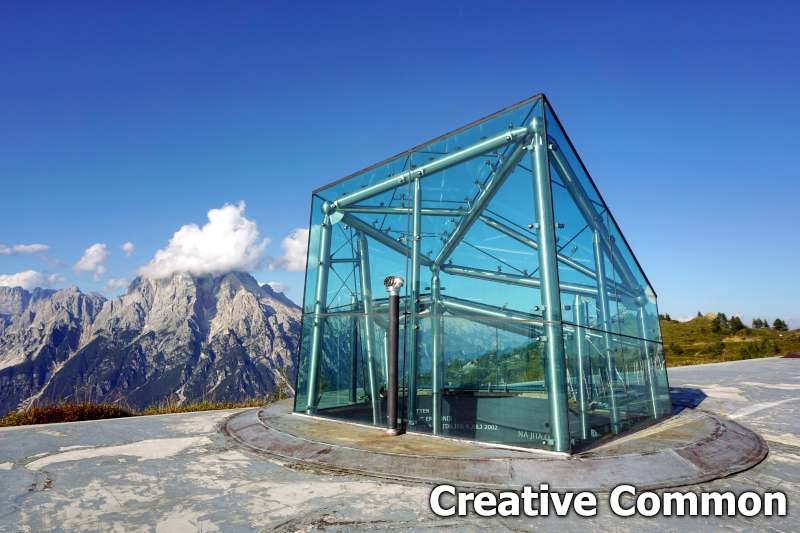
The museum in the clouds of "Cibiana" rises on the ruins of an old fort of World War I, built to stop the advance of the Austrian empire and later used by the partisans as a refuge. The restoration of the building has tried to preserve the original spirit of the fort, maintaining a part of the original structures and creating three glass observation points where, in the past, the cannons were placed.
After the realization of the Dolomites Museum, Reinhold Messner inaugurated a small museum called "Campo Base," an exhibition dedicated to the history of mountaineering, where it's also possible to see the original tent that Messner used in the climb of Mount "Nanga Parbat" in 1978. It is located in the Cultural Pole of the Dolomites, at the "Taulà dei Bos," in the district of "Masarié."
YouTube video
If you want to deepen your understanding of the subject we would suggest you watch this fascinating video on YouTube, where you can hear the story of "Cibiana" directly from the voice of Osvaldo Da Col. The only problem is that it's in Italian. Maybe you could try to use the automatic subtitles and translation feature of YouTube, but the accent may create some translating issues to the algorithm.
 Help us stay ad-free with a small offer.Donate now!
Help us stay ad-free with a small offer.Donate now!
Conclusion
We hope you liked this page on "Cibiana di Cadore" and its murals. Before saying goodbye, we would suggest you read our home page, with all the articles we wrote about Cortina d'Ampezzo.
If you want to thank us you can read the page Support us. If you only want to suggest a change, propose something or just say hello, in the section contacts and info, you'll find all the ways to reach us.
